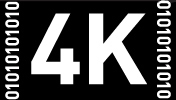

This docudrama based on Margot Lee Shetterly's nonfiction book is a refreshingly old-fashioned docudrama about a little-known aspect of a major chapter in American history. Set in the early 1960s, when the space race, feminism, and the civil rights movement were all poised to reach critical milestones, the film tells the story of three African-American women who worked as “computers” at NASA headquarters. These human computers were low-wage workers doing data entry and manual calculations for the Mercury Project, which launched the first Americans into outer space. NASA's Langley Research Center in Virginia employed an entire division of black women to do this work. As in other aspects of Virginia society at that time, the “colored computers&rdqu were segregated from their white counterparts, something that would change about three years after the events depicted in this film when the Civil Rights Act went into effect and when mechanical computers started replacing number-crunching humans.
A formidable trio of actresses plays the three women at the center of this real-life drama. Taraji P. Henson (Hustle & Flow, The Curious Case of Benjamin Button, and the TV series Empire) plays Katherine Johnson, a gifted mathematician who helped calculate flight trajectories for the missions of Alan Shepard, Gus Grissom, and John Glenn. Octavia Spencer (The Help, Smashed, Fruitvale Station) plays Dorothy Vaughan, the first black supervisor at NASA (and one of only a few female supervisors) who headed up the mathematics task force composed entirely of African-American women. Singer/songwriter Janelle Monáe (who shines as brightly in this same year's Moonlight) plays Mary Jackson, a pioneering aerospace engineer who would become a powerful advocate for the advancement of women and minorities in scientific careers.
As a cinematic work, Hidden Figures can't claim to be as groundbreaking as its subjects, but it delivers everything we want from a Hollywood docudrama. With a minimum of heavy-handed sermonizing, it illuminates a hitherto unknown or undervalued aspect of history, bringing it to life through a fictionalized, crowd-pleasing narrative full of memorable characters. The protagonists in this film represent a far larger group of individuals who lived and worked at this crucial juncture in American life.
We get to know each of these well-drawn characters on multiple levels, but the details of their personal lives are explored only enough to heighten the primary story of their work and its contribution to history. I can easily imagine how this material could be handled as an overwrought TV movie or as a contemporary TV series drowned in details, subplots, and subtext. As rendered by director Theodore Melfi (St. Vincent) and his co-writer Allison Schroeder, Hidden Figures reminds audiences how eminently satisfying a feature-length fictionalization of a true story can be.
I honestly didn't think Hollywood made docudramas as straightforward as this one anymore. The workmanlike pacing and tonal balance between moments of lightness and tension feel just right, leaving the narrative focused squarely on the extraordinary work of these seemingly ordinary women. Yes, there are some white people of both the mean-and-nasty and pure-of-heart varieties, but this is not a saccharine, two-dimensional, feel-good movie for liberals who like to pretend they'd have been on the right side of history (like The Help). The white characters of Hidden Figures are as secondary to the story as are the male romantic interests. They are by no means inconsequential, but they're not the main focus. Feelings of long-overdue acknowledgment and reckoning with a shameful past pervade this picture in the form of anachronistic dialogue and a few scenes and speeches clearly crafted to reflect the characters' feelings rather than to replicate exactly what was said and done at the time. But this type of license should be expected in films of this sort and, when done well, appreciated.
Similarly, if many narrative or thematic elements feel predictable, that's not such a bad thing either. After all, we don't go to movies about celebrated events to be surprised by plot twists. The climax of Hidden Figures turns on whether or not John Glenn will make it back to Earth alive, which I suppose could be suspenseful if a viewer is under thirty-five. But this film feels aimed at an older demographic. The revelations in this picture come through discovering the very existence of these unsung women and the vital roles they played in such a well-documented chapter in American history.
Hidden Figures is an unexpectedly timely period piece, considering that 2016 saw both the death of John Glenn and the horrific return of white supremacist values to the mainstream. Watching a movie that celebrates patriotism, science, and sisterhood, one can't help but think about how far America has come in some ways and how little progress we've made in others. For fans of Philip Kaufman's 1983 film of Tom Wolfe's seminal 1979 book The Right Stuff, who thought we'd seen the definitive picture about the Mercury Astronaut program, Hidden Figures provides an invaluable opportunity to reexamine everything we took away from that story. It also serves as a reminder that no one film, book, or narrative account can ever tell even close to the whole story. Good movies can, however, ignite curiosity and launch further exploration.
This enlightening and highly entertaining docudrama about the unsung African-American women who worked as NASA “computers” during the Mercury Astronaut Project features great turns by its three leads Taraji P. Henson, Octavia Spencer, and Janelle Monáe.




